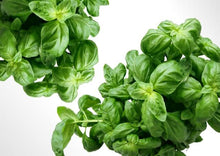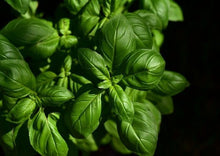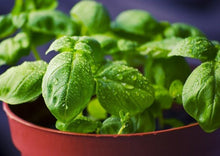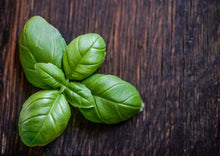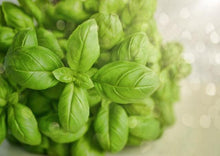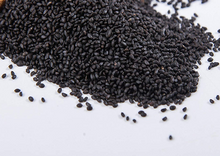
Are you looking to add some Italian flair to your garden and kitchen? Look no further than basil Italian large leaf heirloom plants! These hearty herbs are prized for their robust flavor and fragrant aroma, making them a staple in Italian cuisine.
But the benefits of basil Italian large leaf heirloom plants go beyond their delicious taste. These heirloom plants are larger than most other basil varieties, with leaves that can grow up to 3 inches in length. They're also packed with nutrients, containing high levels of vitamin K as well as smaller amounts of vitamins A and C. Plus, they're a great source of antioxidants, which can help to protect the body against harmful free radicals.
Not sure how to use basil Italian large leaf heirloom plants in your cooking? The possibilities are endless! These herbs are perfect for making homemade pesto, adding flavor to tomato sauce, or sprucing up a variety of dishes from soups and stews to pasta and pizza.
Ready to add some Italian charm to your garden and cooking? Try growing basil Italian large leaf heirloom plants today and taste the difference for yourself!
Typical Genovese Basils are bushy and grows to an average height of about 36 inches. The leaves are shiny, dark green and grows up to 3 inches long on a tall, erect plant that is slow to bolt. Small pink flowers will bud out in summer; pinch the new buds away if you want to harvest more of the leaves.
Italian Large Leaf (Basilicum), is a perennial but grown as annual in most of the region and grows best in zones 4-10.
Planting
- Kickstart the seeds indoors 6 weeks before the last spring frost.
- Basil prefers warmer temperature, wait until the soil has warmed to at least 50°F (daytime and night time temperatures). Basil grows best when the outside temperature reaches 70⁰F.
- Basil prefers full sun and grows best in a location that gets 6 to 8 hrs of full sun daily. They do well in partial sun locations as well.
- Soil should be moist but well-drained. Basil grows well in containers or raised beds, as these allow for better drainage.
- Companion plants: Tomatoes make great companion for basil plants in the garden.
Care
- Basil plants like moisture, mulching helps cool the plant (during host days) and ensure even moisture.
- Pruning helps branches multiply and more harvest. Simply trim the tips after every six sets of leaves
- Every time a branch has six to eight leaves, repeat pruning the branches back to their first set of leaves.
Harvest
- Start picking the leaves of basil when the plants reach about 8 inches tall.
- Leaves are most flavorful before sunrise, harvest early morning for the best taste. Pick the leaves regularly to encourage growth throughout the summer.
Pests / Diseases
Root Knot Nematode: Galls on roots which can be up to 1 inch in diameter but are usually smaller; reduction in plant vigor; yellowing plants which wilt in hot weather.
Control / Prevention: Plant resistant varieties if nematodes are known to be present in the soil; check roots of plants mid-season or sooner if symptoms indicate nematodes; solarizing soil can reduce nematode populations in the soil.
Aphids: Yellow leaves; distorted flowers/fruit; sticky “honeydew”; sooty, black mold that forms on honeydew; large presence of ants on plants.
Control / Prevention: Grow companion plants to either repel aphids away; knock aphids off plants with water spray, apply insecticidal soap; put banana or orange peel around plants; wipe leaves with a 1-2% solution of liquid dish soap, water every 2-3 days for 2 weeks.
Leafminers: Thin, white, winding trails on leaves; heavy mining can result in white blotches on leaves and leaves dropping from the plant prematurely; early infestation can cause fruit yield to be reduced.
Control / Prevention: Check transplants for signs of leafminer damage prior to planting; remove plants from soil immediately after harvest; only use insecticides when leafminer damage has been identified as unnecessary spraying will also reduce populations of their natural enemies.
Flea Beetles: Numerous tiny holes in leaves.
Control / Prevention: Use row covers to physically block flea beetles; mulch heavily; add native plants to attract beneficial insect predators.
Click here to download our free vegetable growing guide







